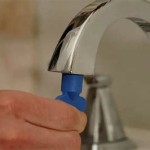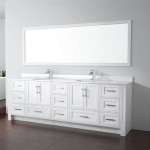Best Bathroom Shower Design: Trends and Considerations
The bathroom shower is no longer simply a functional space for cleansing. It has evolved into a sanctuary, a place for relaxation and rejuvenation. Consequently, bathroom shower design has become a crucial aspect of home renovation and new construction projects. Selecting the optimal shower design necessitates a comprehensive understanding of current trends, spatial limitations, budget constraints, and personal preferences. This article examines key considerations for choosing best bathroom shower designs, providing a guide to creating a stylish and functional showering environment.
Optimizing Shower Space and Layout
The available space dictates the possibilities for shower design. Compact bathrooms typically benefit from space-saving designs like corner showers or walk-in showers with minimal enclosures. For larger bathrooms, the options expand significantly, including spacious walk-in showers with multiple showerheads, or even incorporating a separate shower and soaking tub. Careful consideration of the bathroom’s layout is paramount. This includes the placement of the toilet, vanity, and any other fixtures. A well-planned layout ensures comfortable movement within the bathroom and avoids a cramped or cluttered feel.
Corner showers are an efficient solution for small bathrooms. These showers typically feature a rounded or square enclosure that fits neatly into a corner, maximizing the use of limited space. Walk-in showers, characterized by their barrier-free entry, are gaining popularity due to their accessibility and modern aesthetic. These showers often have a single glass panel or no enclosure at all, creating an open and airy feel. However, proper drainage is crucial to prevent water from escaping the shower area.
For larger bathrooms, a separate shower and tub combination offers the best of both worlds. This design allows for a dedicated showering space and a separate tub for soaking and relaxation. The shower area can be customized with multiple showerheads, body jets, and other features to create a spa-like experience. In determining shower size, it's important to consider building regulations and code requirements. Minimum shower dimensions are typically specified to ensure adequate space for movement and prevent water splashing.
Beyond the basic layout, internal shower features also contribute to space optimization. Recessed niches or shelves can provide storage for toiletries, eliminating the need for bulky shower caddies. Fold-down seats can enhance comfort and accessibility, particularly for individuals with mobility limitations. Thoughtful placement of these features can significantly improve the functionality and usability of the shower space.
Selecting Materials and Finishes
The choice of materials and finishes significantly impacts the overall aesthetic and functionality of the shower. Tile remains the most popular material for shower walls and floors due to its durability, water resistance, and aesthetic versatility. Ceramic, porcelain, and natural stone tiles are all commonly used, each offering unique benefits and drawbacks. Glass tiles, while visually appealing, can be more challenging to clean and maintain. Acrylic and fiberglass shower enclosures are also available, offering a more budget-friendly and low-maintenance option. However, they typically lack the same aesthetic appeal as tile.
When selecting tile, consider the size, shape, and color. Larger tiles can create a more seamless look and minimize grout lines, while smaller tiles offer greater flexibility in design. Different shapes, such as subway tiles, mosaic tiles, and hexagonal tiles, can add visual interest and texture to the shower. The color of the tile can significantly impact the perceived size and brightness of the bathroom. Lighter colors can make a small bathroom feel larger and brighter, while darker colors can create a more dramatic and luxurious feel. Texture is also important; rougher tiles can provide better slip resistance, which is especially important for shower floors.
Grout selection is often overlooked, but it plays a critical role in the longevity and appearance of the shower. Epoxy grout is more resistant to water damage and staining than cementitious grout, making it a popular choice for shower applications. The color of the grout can also be used to enhance the design of the tile. A contrasting grout color can highlight the shape of the tiles, while a matching grout color can create a more seamless look.
The shower hardware, including the showerhead, faucet, and handles, should complement the overall design of the shower. Chrome, brushed nickel, and oil-rubbed bronze are all popular finishes that can be used to create different looks. The type of showerhead can also significantly impact the showering experience. Rain showerheads provide a gentle and relaxing shower, while handheld showerheads offer greater flexibility and control. Body jets can add a spa-like touch to the shower, providing a massaging effect. The choice of shower hardware should be based on personal preferences and the desired functionality of the shower.
Incorporating Key Design Elements
Beyond the basic layout and materials, several key design elements can elevate the shower from a purely functional space to a stylish and inviting sanctuary. Lighting is a crucial element that can significantly impact the mood and ambiance of the shower. Recessed lighting, waterproof LED strips, and skylights can all be used to create a well-lit and inviting shower space. The type of lighting used should be appropriate for the task at hand, providing ample illumination for showering and grooming.
Ventilation is essential for preventing moisture buildup and mold growth in the shower. A properly sized exhaust fan should be installed to remove excess moisture from the air. The fan should be vented to the outside of the house to prevent moisture from recirculating. Natural ventilation, such as a window or skylight, can also help to reduce moisture buildup.
Accessibility is an important consideration for individuals with mobility limitations. Walk-in showers with barrier-free entry, grab bars, and shower seats can make the shower safer and more accessible. Adjustable showerheads and easy-to-reach controls can also enhance accessibility. Universal design principles should be incorporated into the shower design to ensure that it is usable by people of all ages and abilities.
Adding personal touches can transform the shower into a truly unique and personalized space. Plants, artwork, and decorative accessories can add color, texture, and personality to the shower. However, it is important to choose items that are water-resistant and easy to clean. A small shelf or niche can be used to display decorative items without cluttering the shower floor. The goal is to create a space that is both functional and aesthetically pleasing, reflecting the occupant's personal style and preferences.
Frameless shower doors enhance the sense of spaciousness, as they appear to vanish, making the shower area feel larger and more open. They also contribute to a modern, minimalist aesthetic. Shower niches carved into the walls offer storage solutions that are both functional and visually appealing. These niches can hold shampoos, soaps, and other toiletries, keeping them organized and easily accessible.
Heated floors can add a touch of luxury and comfort to the shower. Radiant floor heating systems warm the tiles, providing a warm and inviting surface to step onto after showering. This feature is particularly beneficial in colder climates. Smart shower systems, which feature digital controls and customizable settings, are becoming increasingly popular. These systems allow users to control the water temperature, pressure, and spray patterns with the touch of a button. Some smart showers even offer voice control and integration with other smart home devices.

45 Best Modern Shower Design Ideas To Elevate Your Bathroom Room

40 Stunning Walk In Shower Ideas And Designs With Pictures

Discover 68 Creative Bathroom Shower Tile Ideas In 2024 Badezimmer Fliesen Ideen Bad Designs

Luxurious Walk In Showers Shower Ideas

Bathroom Tile Ideas Flooring Backsplash Shower Designs

30 Cool Shower Designs That Will Leave You Craving For More

13 Walk In Shower Ideas For Small Bathrooms

15 Stunning Bathroom Ideas 2024 Best Designs

Small Bathroom Ideas To Create Beautiful Toilet Designs Livspace
:strip_icc()/LizzieGreenAFTER2bathroom-521c541b7dbc45aead5a6e2c32840561-9e7dcbef52324bb4a61e9680da2b7182.jpg?strip=all)
25 Shower Room Ideas That Are Utterly Luxurious
Related Posts







